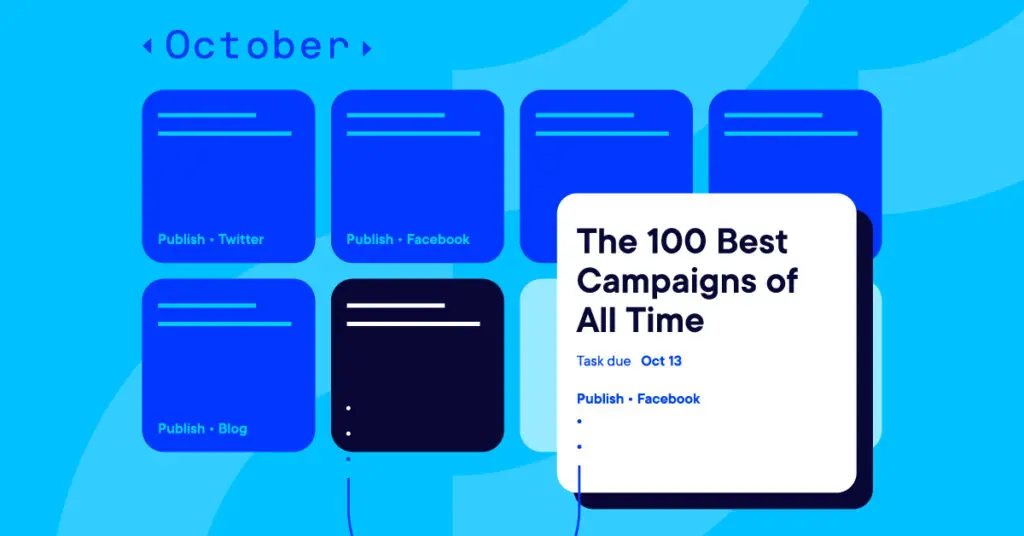
Connecting with your target audience and key stakeholders requires tact, care and afterthought. Without an effective communications plan, your company could end up struggling. Read more to learn how to market more effectively.

Beyond effective crisis management, a marketing communications plan template helps marketers improve their brand messaging. It’s a tried-and-true roadmap that shows you how to craft the right messages for the right audience.
In this blog post, you’ll learn:
Let’s assume you already have a communications strategy in place for each key audience your business is involved with (think: your prospects, customers, suppliers, investors, sponsors, etc.). What are the limits of that strategy?
How effectively does it handle both internal communication and external communication?
A good communications plan ensures you deliver key messages to key audiences to achieve the underlying business objectives and drive a positive brand experience.
A communications plan is simply a strategy that allows you to deliver information to appropriate stakeholders. The strategy will flesh out the messages you need to communicate, to whom you’re targeting those messages, and on which channels.
As much as an effective comms plan shields your brand when disaster strikes, it also serves as a springboard when launching new products, pitching new initiatives, and broadcasting an existing (or new) marketing plan. Think of it as the final piece in your marketing strategy jigsaw.
Here are eight steps you can follow to create an effective marketing communications template:
Before setting out to create a communications plan, you first need to decide where it fits into your business objectives.
So, it’s crucial you complete an audit of the current state of communications within your company. This will help you identify any bottlenecks or gaps.
To conduct an audit, follow these five actionable steps:
Do you, perhaps, want to drive positive social media feedback within a specific timeframe? Or do you simply want to articulate an ongoing project to make sure it’s on time, within budget, and aligned with customers’ expectations?
Whatever they are, make sure your deliverables are SMART — Specific, Measurable, Achievable, Relevant, and Time-Bound.
The next step is to identify and understand your target audience. Which stakeholders are you trying to reach?
If, for example, the communications plan is for customers, you need to establish their personas. What are their pain points? How would they find value in your products?
Alternatively, a press release highlighting your goals is a good idea if you want to write for the media.
The key here is to know your audience on a deeper level.
Your outline should ideally be in the form of a chart or table. Carefully highlight the key messages you need to put out there, to whom you’re targeting those messages, and on which communication channels.
Once you have the outline all figured out, go ahead and structure your communications plan template this way (feel free to copy and paste these sections on your own table of contents):
Include a high-level description of the plan, why it exists, and a general idea of how you will implement the plan on your project. Think of it as the executive summary.
Next, you need to select the communication channels on which you’re going to share your messaging. As a marketer, you know there is a huge variety in communications channels, so we’ll just cover some common ones:
Summarize and systemize your communications plan template so your messaging can better align with your core value proposition.
But the job is only halfway done.
Once you’ve figured out your plan, go ahead and pitch it to the relevant stakeholders. If it’s an internal communications strategy, then give each team member the heads up, informing them what’ll change when the new plan is rolled out. You can utilize training sessions if needed.
If it’s an external communications plan, you need to bring on board a much bigger bench.
As always, you can leverage our marketing planning software as a single source of truth to align your team on every detail of your plan. Stakeholders will have the necessary context, collaborations and insights needed to execute the new marketing communications plan template to perfection.
It’s now time to plan your messaging and campaigns on your calendar.
This will deliver company-wide visibility into what your team members are doing, making it easier to enforce deadlines, and helping other key stakeholders understand what needs to be done and when.
Content Marketing’s marketing calendar software was made for this exact purpose. Use it to see, share and stay sharp. It will also keep your content, campaigns, and communications plan on track.
Even if you didn’t ace your communications plan the first time, don’t throw in the towel just yet. The key here is to keep improving.
Measure the outcomes of the plan after presenting it to key stakeholders, determine what went wrong, and work towards improving those areas next time.
Incorporate Content Marketing into your marketing stack with Optimizely's content marketing platform so you can create workflows and visibility in all your marketing communications planning.